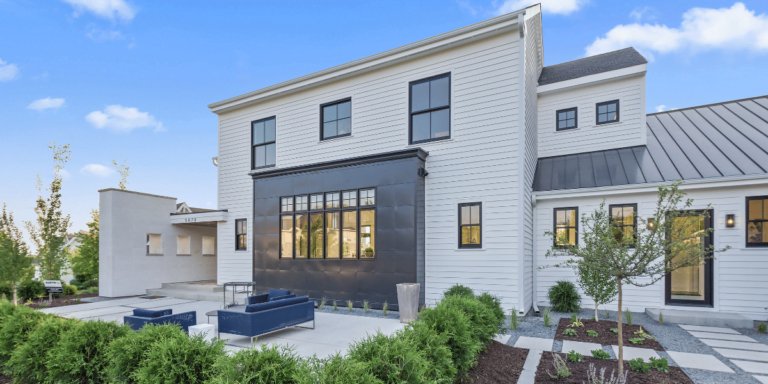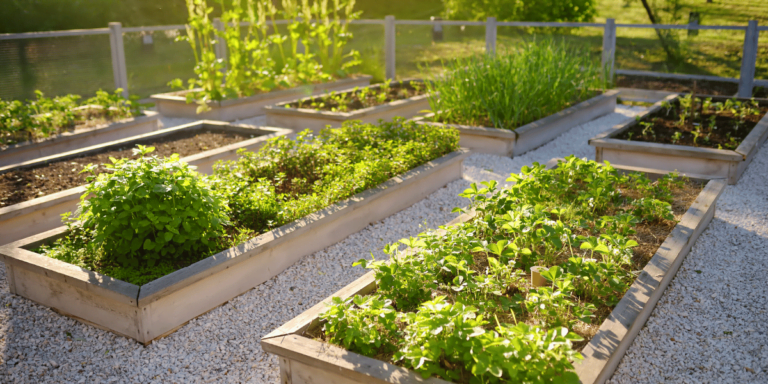Urban roof gardening is revolutionizing the way we think about sustainable urban gardening and eco-friendly landscape design. By utilizing innovative water conservation techniques and incorporating renewable energy in eco-gardens, urban roof gardeners are transforming rooftops into thriving green spaces that benefit both the environment and the community.
However, as with any endeavor, urban roof gardening comes with its fair share of challenges. From limited space and access to resources to the need for specialized knowledge and skills, urban roof gardeners face hurdles in creating and maintaining these unique landscapes. Yet, through determination and ingenuity, they are overcoming these challenges and achieving remarkable triumphs in their pursuit of sustainable urban gardening.
Key Takeaways:
- Urban roof gardening offers opportunities for sustainable urban gardening and eco-friendly landscape design.
- Innovative water conservation techniques play a crucial role in urban roof gardening.
- Renewable energy can be incorporated into eco-gardens to enhance their sustainability.
- Urban roof gardeners face challenges such as limited space and specialized knowledge.
- Despite challenges, urban roof gardeners are achieving remarkable triumphs in creating thriving green spaces.
The Importance of Urban Roof Gardening for Food Security
Rapid urbanization and population growth present significant challenges for food security. As cities expand and agricultural land decreases, finding sustainable solutions to feed a growing population becomes crucial. Urban roof gardening is emerging as a viable and innovative approach to address this issue, offering numerous benefits for both individuals and communities.
Urban Permaculture Practices
Urban permaculture practices play a vital role in urban roof gardening, promoting self-sufficiency and sustainable food production. By utilizing natural ecosystem principles, permaculture strives for a harmonious integration of plants, animals, and human communities. In urban rooftop gardens, permaculture techniques such as companion planting, vertical gardening, and soil regeneration help maximize space and resource utilization, contributing to increased food security.
Organic Composting Methods
Organic composting is another essential practice in urban roof gardening. By converting kitchen scraps, yard waste, and other organic materials into nutrient-rich compost, gardeners can improve soil fertility and enhance plant growth. Composting also reduces waste sent to landfills, minimizing the environmental impact of urban areas. Implementing organic composting methods in rooftop gardens not only produces healthier crops but also supports a more sustainable and circular food system.
Green Roof Ecosystems
Green roof ecosystems are integral components of urban roof gardening. These systems consist of layers of vegetation, growing media, and drainage systems installed on rooftops. They provide a range of benefits, including improved air quality, reduced energy consumption, and enhanced stormwater management. From a food security perspective, green roof ecosystems offer additional space for urban agriculture, enabling the cultivation of a diverse range of crops in urban areas.
Biophilic Design Principles
Biophilic design principles emphasize the integration of natural elements and patterns into urban spaces, creating environments that promote well-being and connection with nature. Applying biophilic design principles in urban roof gardens enhances the overall experience and productivity of the space. It creates a harmonious blend of aesthetics and functionality, attracting pollinators, beneficial insects, and birds, thereby supporting pollination and pest control.
By implementing urban permaculture practices, organic composting methods, green roof ecosystems, and biophilic design principles, urban roof gardening significantly contributes to improving food security in urban areas. These sustainable practices not only increase access to fresh, locally grown produce but also foster a sense of community and connection with nature. As a result, urban rooftop gardens become valuable assets in creating resilient and vibrant urban landscapes.
Stay tuned for the next section, where we will explore innovative strategies for water conservation in urban roof gardening.
Innovative Strategies for Water Conservation in Urban Roof Gardening
Water scarcity is a major concern in urban areas, making efficient water conservation techniques essential in urban roof gardening. With the help of high-tech smart gardening tools and strategies, along with the use of indoor hydroponic systems, urban gardeners can optimize water usage and reduce wastage, ensuring a sustainable and eco-friendly approach to urban roof gardening.
Implementing innovative water conservation techniques is crucial for the long-term success of urban roof gardens. These techniques not only help overcome the challenges posed by water scarcity but also contribute to the overall sustainability of the urban environment.
High-Tech Smart Gardening
One of the most significant advancements in urban roof gardening is the integration of high-tech smart gardening tools and systems. These state-of-the-art technologies enable precise monitoring and control of water usage, ensuring that plants receive the right amount of water without any excess wastage.
Smart irrigation systems equipped with sensors can detect soil moisture levels and adjust watering schedules accordingly. This prevents water runoff and reduces water consumption. Additionally, automated watering systems can be programmed to deliver water during optimal times, such as early morning or late evening, minimizing water loss through evaporation.
Indoor Hydroponic Systems
Indoor hydroponic systems take water conservation in urban roof gardening to another level. Hydroponics is a soilless gardening technique that uses nutrient-rich water as a growing medium for plants. Unlike traditional soil-based gardening, hydroponics requires significantly less water while providing plants with optimal hydration.
In an indoor hydroponic system, water is recirculated and reused continuously, drastically reducing water wastage. This closed-loop system also eliminates the need for excessive watering and helps maintain precise nutrient levels, promoting healthy plant growth.
Furthermore, indoor hydroponic systems can be integrated with smart gardening technologies, enabling remote monitoring and control of water and nutrient levels. This combination of indoor hydroponics and smart gardening not only conserves water but also maximizes plant productivity in limited space.
By leveraging innovative water conservation techniques such as high-tech smart gardening and indoor hydroponic systems, urban roof gardeners can optimize water usage, resulting in significant water savings and a more sustainable approach to urban gardening.
Enhancing Biodiversity and Wildlife Habitat in Urban Roof Gardens
Urban roof gardens provide a unique opportunity to create wildlife habitats and promote biodiversity in densely populated areas. By incorporating green roof ecosystems and integrating contemporary garden artistry, urban roof gardeners can attract and support diverse wildlife species, contributing to the conservation of urban biodiversity.
Wildlife habitat garden creation is a fundamental aspect of urban roof gardening. These gardens are intentionally designed to provide food, shelter, and nesting areas for various wildlife species. From pollinators like bees and butterflies to birds and small mammals, urban roof gardens can attract a range of wildlife, creating a mini-ecosystem in the heart of the city.
The integration of green roof ecosystems further enhances the biodiversity of urban roof gardens. Green roof ecosystems are designed to mimic natural habitats, offering a sustainable environment for plants, insects, and other organisms. The diverse plant species in these ecosystems not only beautify the garden but also provide food and shelter for wildlife, supporting their survival and contributing to the overall health of the urban ecosystem.
Benefits of Wildlife Habitat Garden Creation in Urban Roof Gardens:
- Supports local biodiversity and helps preserve native plant and animal species
- Promotes pollination, leading to increased crop yields and healthier urban ecosystems
- Provides a natural pest control mechanism, reducing the need for harmful pesticides
- Creates a visually appealing and calming environment, improving the well-being of residents and visitors
- Contributes to urban heat island mitigation by reducing ambient temperature and improving air quality
Contemporary garden artistry plays a crucial role in enhancing wildlife habitat creation and aesthetics of urban roof gardens. Through thoughtful design elements such as layered vegetation, vertical gardens, and ornamental features, gardeners can create visually stunning spaces that are also functional for wildlife. Incorporating water features, bird feeders, and nesting boxes further enhances the appeal of these innovative rooftop habitats, attracting a wide range of wildlife species and allowing them to thrive.
Conclusion
Urban roof gardening is a transformative practice that holds immense potential for creating sustainable and eco-friendly urban landscapes. Despite the challenges faced, such as limited space and water scarcity, urban roof gardeners have been able to achieve remarkable results by implementing innovative strategies.
By embracing permaculture practices and integrating green roof ecosystems, urban roof gardeners can overcome these challenges and create thriving, self-sustaining gardens. The use of innovative water conservation techniques ensures efficient water usage, contributing to the overall sustainability of urban roof gardening.
Furthermore, the continuous advancements in smart garden automation provide exciting opportunities for urban roof gardeners to optimize their gardening processes. From automated watering systems to smart sensors that monitor plant health, these technologies enhance the efficiency and productivity of sustainable urban gardening.
Another aspect that adds charm and beauty to urban roof gardens is contemporary garden artistry. By incorporating modern design elements and artistic installations, urban roof gardeners can create visually stunning landscapes that also serve as functional spaces for relaxation and recreation.
In conclusion, sustainable urban gardening, leveraged by eco-friendly garden renovation, contemporary garden artistry, and smart garden automation, is paving the way for the creation of beautiful and sustainable urban spaces. Urban roof gardens not only contribute to environmental conservation but also provide a green haven in the midst of bustling cities, enhancing the well-being and quality of life for urban dwellers.
FAQ
What are some challenges faced by urban roof gardeners?
Urban roof gardeners face challenges such as limited space, weight restrictions, and access to sunlight. Additionally, they need to address issues related to water scarcity, soil quality, and the establishment of a sustainable ecosystem.
How does urban roof gardening contribute to food security?
Urban roof gardening helps address food security concerns by implementing sustainable practices such as urban permaculture and organic composting. By utilizing green roof ecosystems and biophilic design principles, urban roof gardens can enhance productivity and resilience, contributing to a more secure food supply.
What innovative water conservation techniques can be used in urban roof gardening?
Urban roof gardeners can employ high-tech smart gardening tools and strategies to optimize water usage and minimize wastage. Indoor hydroponic systems are also utilized to conserve water and ensure a sustainable and eco-friendly approach to urban roof gardening.
How can urban roof gardens enhance biodiversity and create wildlife habitats?
By incorporating green roof ecosystems and integrating contemporary garden artistry, urban roof gardeners can create wildlife habitats and promote biodiversity in densely populated areas. These gardens attract diverse wildlife species, contributing to the conservation of urban biodiversity.
What is the potential of urban roof gardening in creating sustainable urban spaces?
Urban roof gardening has immense potential in creating sustainable and eco-friendly urban landscapes. Through the application of innovative water conservation techniques, permaculture practices, and the integration of green roof ecosystems, urban roof gardeners can overcome challenges and achieve remarkable results. The continuous advancement of smart garden automation and the application of contemporary garden artistry further enhance the potential of sustainable urban gardening.
















